Indian nationalism
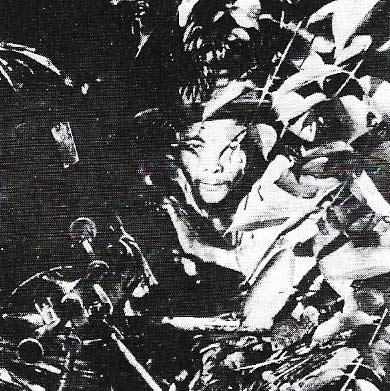
Figure 1. By origin, Gurkha soldiers, still a distinctive element in the British army, were mountain tribesmen from Nepal who were defeated by the British in the Gurkha wars of 1814–1816. They became famous for their endurance, loyalty, and courage, and for their kukri, deadly broad-bladed curved knives that they carry.
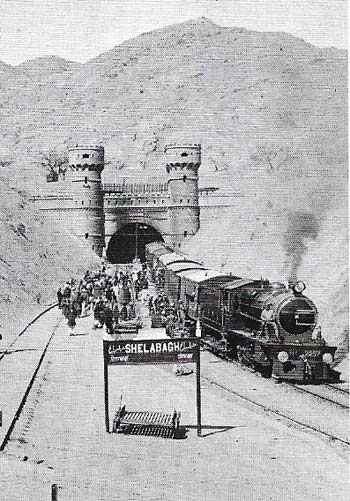
Figure 2. By 1948, India had the fourth largest railway system in the world.
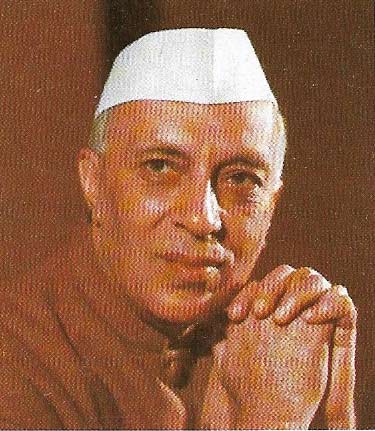
Figure 3. Jawaharlal Nehru (1889–1964) was the first prime minister of independent India. Educated in England, he emerged as a leading figure in the Congress Party in the 1930s and as Gandhi's heir.
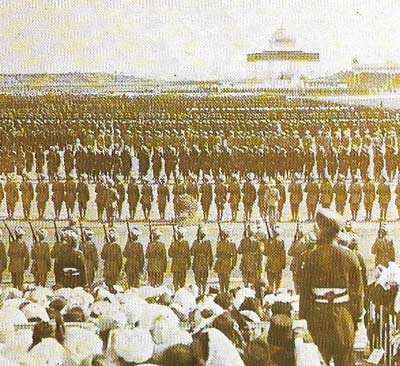
Figure 4. As well as the provinces which they ruled directly, the British retained ultimate power over nearly 600 autonomous princely states. The Victorians adopted the durbar (traditionally in India a gathering of vassels to do homage to the ruler) to symbolize the allegiance of the Indian princes to the British monarch. In 1911 durbar was attended by King George V in person.
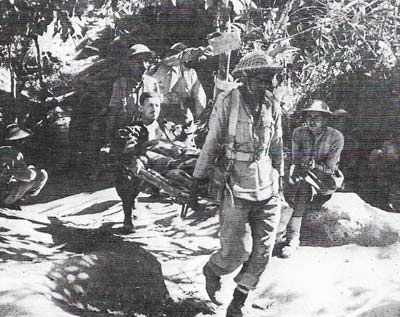
Figure 5. The Indian army was an enormous asset for the British in the defense of their vast empire. In World War I, Indian troops fought on the Western Front, while in the period 1939–1945 they were used in Burma, the Middle East, the Mediterranean and North and East Africa. The loss of their services after independence in 1947 placed a great strain on Britain's own military resources.
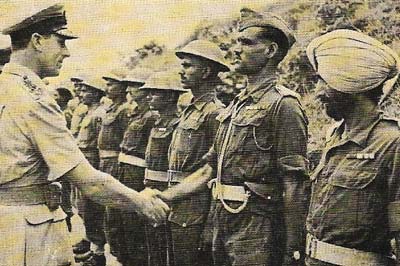
Figure 6. Lord Louis Mountbatten (1900–1979) was the last Indian viceroy. His political gifts, much needed in the transition of India and Pakistan to independence, had been shown in SE Asia in World War II.
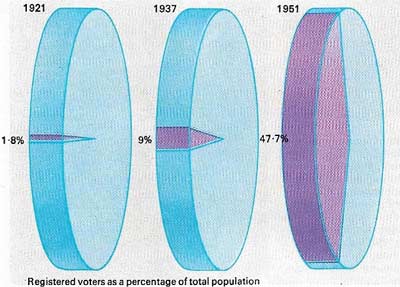
Figure 7. Political democracy in India was extended in the reforms of 1919 and 1935 when the British gave the Indians the right to participate in government.
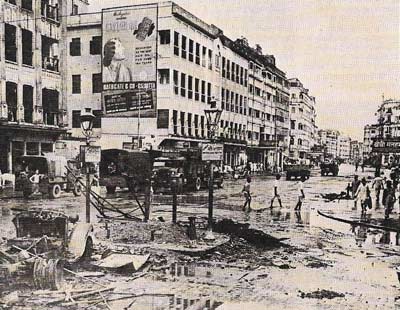
Figure 8. As independence drew nearer the tensions between different communities in India became acute. The most serious were those between Hindus and Muslims, especially in areas where their numbers were almost equal and the proposed partition caused great bitterness. The aftermath of bitter riots in Calcutta in 1946, when at least 4,000 people died in the communal fighting, is illustrated here.
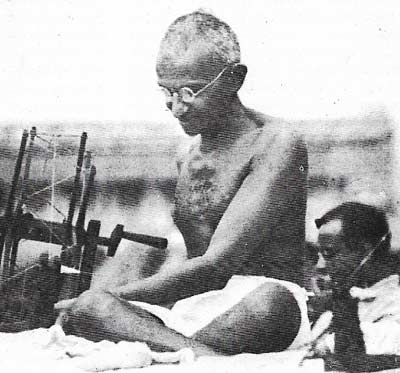
Figure 9. Gandhi adopted the symbol of the spinning wheel in 1920. He believed that India should make her own cloth, thus threatening British textile exports to India and giving Indians the self-confidence necessary for independence.
In 1900 British rule in India appeared more secure and more permanent than ever. Lord Curzon's years as viceroy (1898–1905) emphasized the determination of the British to remain the governors of India. The greater efficiency of the administration, the maintenance of peace and order, and the spread of railways (Figure 2) and the telegraph, all seemed to confirm Britain's grip on India, while in the wider world British foreign policy was geared to the retention of the Indian empire as the second great base (after Britain itself) of British world power. Yet within fifty years that same Indian empire had been split up and the British rulers dismissed.
Growth of nationalism
Part of the reason for this reversal lay in the growth of a nationalism which drew support from Indians all over the subcontinent. This nationalism had risen from modest beginnings in the late 19th century with the foundation of the Indian National Congress Party and was at first approved by the British for its attempt to break through the divisions of caste, religion and region that stifled efforts to modernize India. But before long they came to see it as a potent threat to British power and a stimulant to disorder and anarchy. Anti-British terrorism before 1914 made many officials deeply hostile to the call of nationalists for more Indian participation in government. The British believed that the Congress was the tool of ambitious and unscrupulous westernized Indians, seeking not independence and unity but self-advancement, regardless of the poor.
The first great triumph of Indian nationalism came in the years immediately following World War I when Mahatma Gandhi (1869–1948) (Figure 9) emerged as a charismatic leader pioneering the technique of non-cooperation and non-violent resistance to the government through peaceful demonstrations and refusal to pay taxes. Gandhi was helped in showing the British that many Indians rejected their authority by the effects of India's involvement in World War I. Higher taxation, the recruitment of thousands of Indians for the army, and the use of that army to defend Britain in northern France united Indians of diverse interests in the belief that the British were placing new and unfair burdens upon them and breaking the terms on which British rule was accepted. They turned for protection to the Congress Party. To the British, Gandhi's campaign was deeply worrying. Some of them believed a second mutiny was imminent (the first mutiny in 1857–1858 had resulted from unrest amongst the sepoys [soldiers], but was sup-pressed by the British): and it was in a climate of panic that the notorious shooting of unarmed Indian demonstrators – the Amritsar Massacre – occurred in 1919.
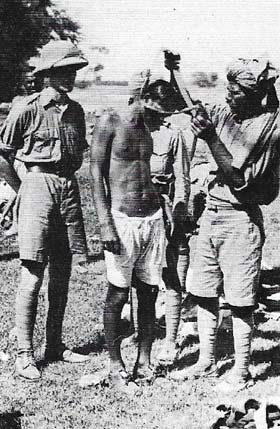 |
| At Amritsar on 13 April 1919, British troops shot dead over 300 unarmed Indians during an illegal demonstration. The Indians were forced to apologize publicly after the riot because the British thought this would encourage them to be orderly and respectful. Here a Sikh is arrested. |
Divisions among the Indians
For all its successes between 1918 and 1922, Indian nationalism faced enormous problems in trying to destroy British power. Once India had settled down after the war and its aftermath, non-cooperation fizzled out. Many Indians were profoundly suspicious of the politicians who ran the Congress Party. The rural landowners who wished to keep the social status quo disliked the urban and westernized Indians who dominated the nationalist movement. They feared that if such men became strong enough to throw out the British their next target would be the conservative gentry, still so powerful in the countryside. And not all Indians wanted democracy and one man, one vote. Hindus living in areas where the majority was Muslim, and vice versa, were fearful that popular government would threaten their interests and maybe their lives.
This meant that the British still had an advantage. They were willing to give Indians a greater say in running their internal affairs so as to avoid trouble; and they found that delegating some power to some Indians was a convenient method of preventing all Indians from combining against them. They hoped by this to keep India united in a federation which in international matters would still be tightly bound to Britain; and they wanted to go on using the Indian army.
These clever calculations were swept away by two "accidents". The first was the outbreak of World War II – once again involving India – which aroused more resentment among Indians than World War I. Meanwhile British prestige was undermined by humiliating defeats by the Japanese. The second "accident" was the resolve of the leaders of the large Muslim communities of north India to insist upon the creation of Pakistan as a separate Muslim state.
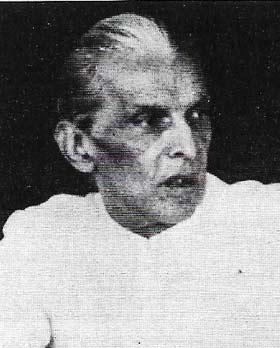 |
| Mohammed Jinnah (1876–1948) was the architect of Pakistan, which resulted from the partitioning of the old unified India into two states. He believed this was the only way to safeguard Muslim interests. |
Independence
Thus India gained independence in a way quite unintended by the British. The division of the subcontinent wrecked the delicate mechanisms of federalism through which they had planned to influence India in her international role as a pillar of the Empire-Commonwealth. Deprived of Indian help, the British Empire east of Suez withered away in less than 20 years. In India itself, independence left vast problems unsolved: the overpopulation of the countryside; the failure to increase food production sufficiently; the desperate poverty of village and city alike. The British had lacked the means and the nerve to modernize Indian society properly. The victory won by Indian nationalism in 1947 was, therefore, only a beginning. The building of a modern nation state lay ahead.
 ,are,,,
,are,,,